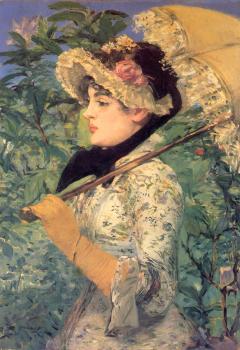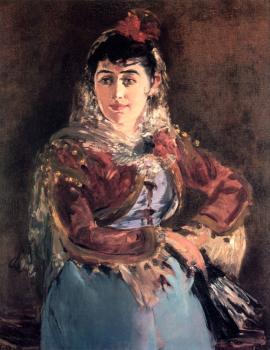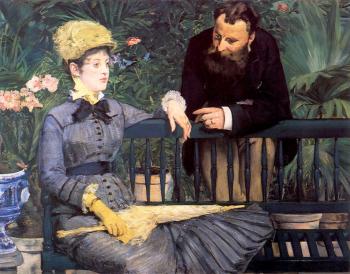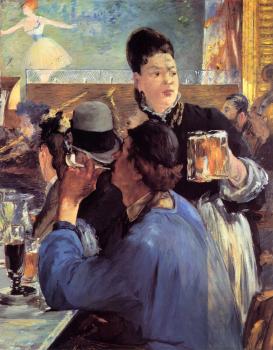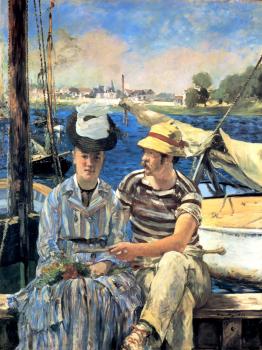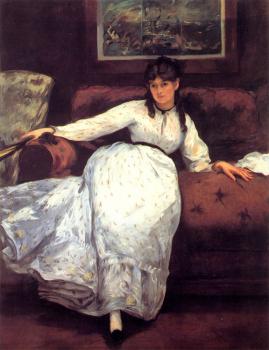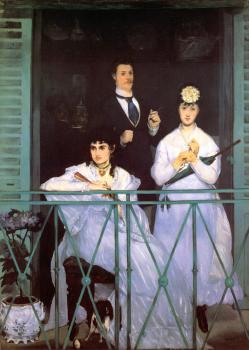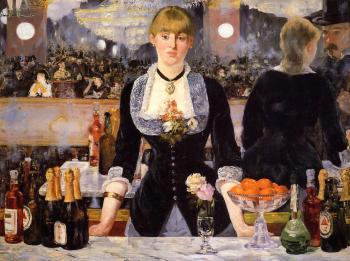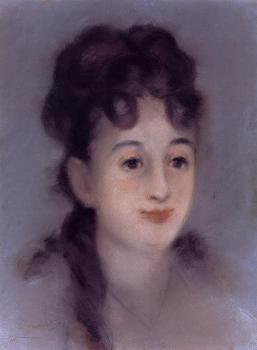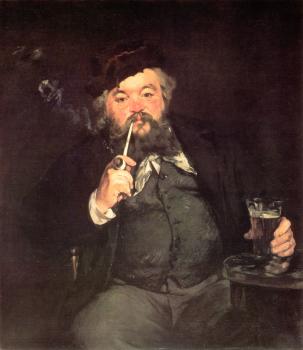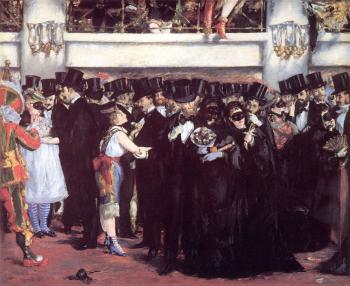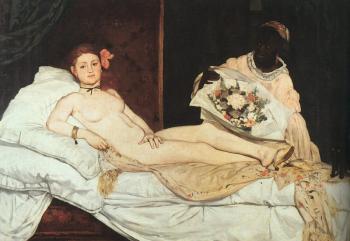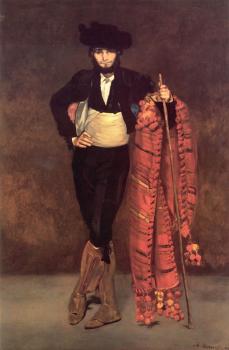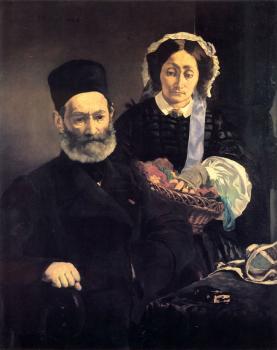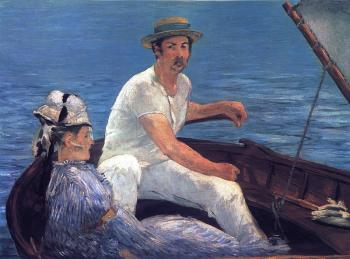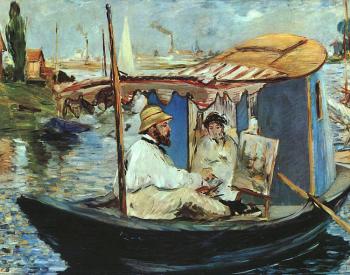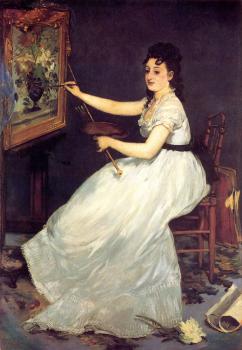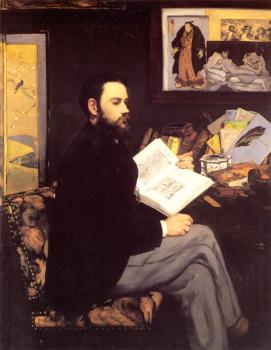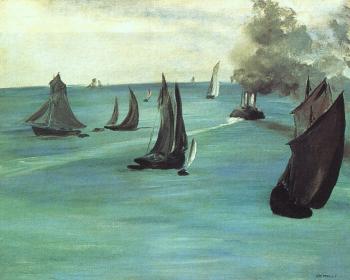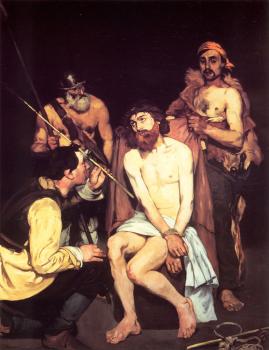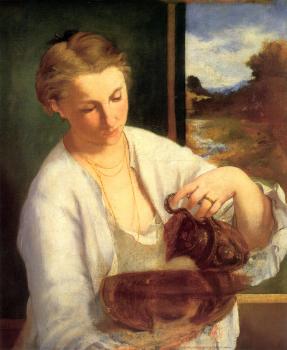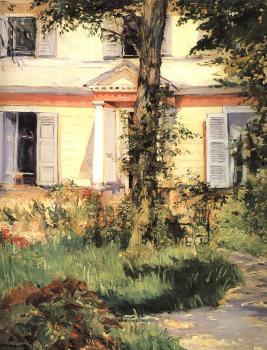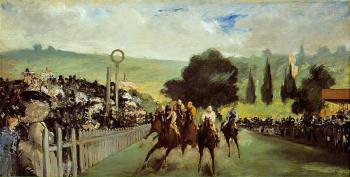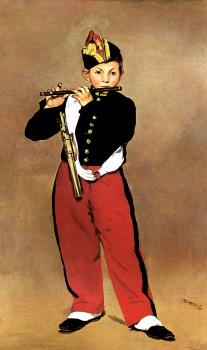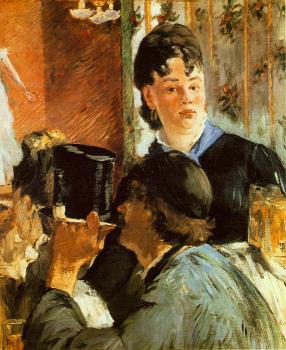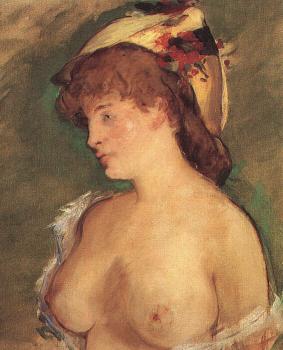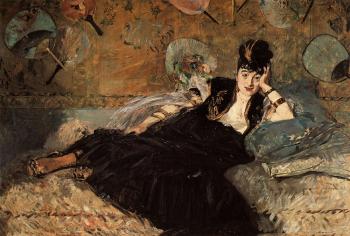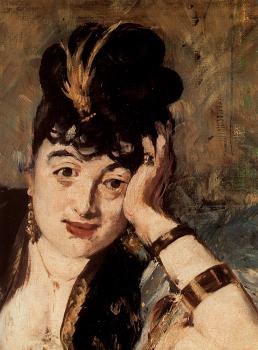Edouard Manet

Edouard Manet 23 January 1832 - 30 April 1883, was a French painter. One of the first nineteenth century artists to approach modern-life subjects, he was a pivotal figure in the transition from Realism to Impressionism. His early masterworks The Luncheon on the Grass and Olympia engendered great controversy, and served as rallying points for the young painters who would create Impressionism. Today these are considered watershed paintings that mark the genesis of modern art.
Born into an upper class household with strong political connections, Manet rejected the future originally envisioned for him, only to become engrossed in the world of painting. The last 20 years of Manet's life saw him form bonds with other great artists of the time, and develop his own style that would be heralded as innovative and serve as a major influence for future painters.
Edouard Manet was born in Paris on 23 January 1832, to an affluent and well connected family. His mother, Eugenie-Desiree Fournier, was the daughter of a diplomat and goddaughter of the Swedish crown prince, Charles Bernadotte, from whom the current Swedish monarchs are descended. His father, Auguste Manet, was a French judge who expected Edouard to pursue a career in law. His uncle, Charles Fournier, encouraged him to pursue painting and often took young Manet to the Louvre. In 1841 he enrolled at secondary school, the College Rollin. In 1845, at the advice of his uncle, Manet enrolled in a special course of drawing where he met Antonin Proust, future Minister of Fine Arts and subsequent life-long friend.
At his father's suggestion, in 1848 he sailed on a training vessel to Rio de Janeiro. After Manet twice failed the examination to join the Navy, the elder fManet relented to his son's wishes to pursue an art education. From 1850 to 1856, Manet studied under the academic painter, Thomas Couture. In his spare time, Manet copied the old masters in the Louvre.
From 1850 to 1856 he visited Germany, Italy, and the Netherlands, during which time he absorberd the influences of the Dutch painter Frans Hals, as well as the Spanish artists, Diego Velazquez and Francisco Jose de Goya.
In 1856, Manet opened his own studio, His style in this period was characterized by loose brush strokes, simplification of details and the suppression of transitional tones. Adopting the current style of realism initiated by Gustave Courbet, he painted The Absinthe Drinker (1858-59) and other contemporary subjects such as beggars, singers, Gypsies, people in cafes, and bullfights. After his early years, he rarely painted religious, mythological, or historical subjects; examples include his Christ Mocked, now in the Institute of Chicago, and Christ with Angels, in the Metropolitan Museum of Art, New York.
Complete list of Edouard Manet's oil paintings
- Amberger, Christoph Germany, 1505 - 1562
- Ambros, Raphael von Austria, 1854 - 1895
- Amerling, Friedrich von Austria, 1803 - 1887
- Ames, Ezra United States, 1768 - 1836
- Amiconi, Bernardo 1859 - 1875
- Amigoni, Jacopo Italy, 1682 - 1752
- Amyot, Catherine -Unknown
- Ancher, Michael Peter Denmark, 1849 - 1927
- Andersen, Carl Christian Denmark, 1849 - 1906
- Gogh, Vincent van Holland, 1853-1890
- Gauguin, Paul France, 1848-1903
- Modigliani, Amedeo Italian
- Anderson, John Macvicar 1835 - 1915
- Anderson England
- Anderson, Sophie Gengembre England, 1823 - 1903
- Renoir, Pierre Auguste France, 1841 - 1919
- Dali, Salvador Spain
- Cole, Thomas American, 1801 - 1848
- Correggio Italy, 1489 - 1534
- Cranach, Lucas the Elder 1472 - 1553
We can do all styles and subjects: People, Landscape, Still life, Portrait, Impressionism, Abstract, classical paintings, Seascapes, Cityscapes, romantic sceneries, flowers, fruits, winebottle, animals, horse, monkey, tiger, dog, chicken, and modern oil paintings, religious paintings, art deco, POP art, oil painting with figures and nudes, contemporary artworks, realistic paintings by photo. Choose best material for all oil paintings, Attractive image and vivid color, assured quality.

